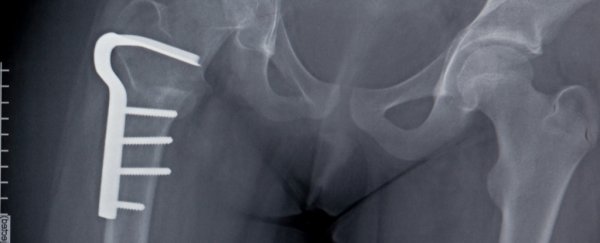We like to view modern medicine as based on rigorous science, and while it certainly beats the various dangerous alternatives out there, sometimes physicians still end up adopting practices based on little evidence.
When a medical treatment, device or procedure is no better than previous or lesser alternatives, it's deemed a 'medical reversal'. These discredited practices are a major barrier to better and cheaper healthcare, but actually identifying them is surprisingly difficult and rarely done.
A recent study, designed to create a more comprehensive list, has unearthed nearly 400 established treatments, devices and procedures that fit this bill.
"We hope our broad results may serve as a starting point for researchers, policy makers and payers who wish to have a list of practices that likely offer no net benefit to use in future work," says hematologist-oncologist Vinay Prasad from Oregon Health & Science University (OHSU), who helped coin the term 'medical reversal'.
The findings are based on more than 15 years of randomised controlled trials, a type of research that aims to reduce bias when testing new treatments. Across 3,000 articles in three leading medical journals from the UK and the US, the authors found 396 reversals.
While these were found in every medical discipline, cardiovascular disease was by far the most commonly represented category, at 20 percent; it was followed by preventative medicine and critical care.
Taken together, it appears that medication was the most common reversal at 33 percent; procedures came in second at 20 percent, and vitamins and supplements came in third at 13 percent.
This line-up is unsurprising given the history of medical reversals that we do know about. In the late 20th century, for instance, sudden cardiac death was deemed a "world wide public health problem". Most cases were thought to arise from an irregular heart rhythm, and so a new generation of antiarrhythmic drugs were developed.
"Cardiologists began using these medications in widespread fashion," Prasad and another colleague explain in a 2011 paper.
"In the late 1980s, the Cardiac Antiarrhythmic Suppression Trial (CAST) was conducted to assess the safety of what was then commonplace. Interestingly, recruitment for the trial was hindered by physicians who refused to let patients undergo randomisation with a 50 percent chance of not receiving these medications."
In the end, however, the randomised trial found that the medication was even more deadly than a placebo.
"Once an ineffective practice is established, it may be difficult to convince practitioners to abandon its use," explains Prasad.
"By aiming to test novel treatments rigorously before they become widespread, we can reduce the number of reversals in practice and prevent unnecessary harm to patients."
While not all of these medical reversals are deadly, they are all, by definition, useless expenses. Past research in the US has predicted that in the Medicare population from 2008 to 2009, these services cost between $1.9 and $8.5 billion.
"In countries like the US, where there was a 20 [percent] increase in spending between 2013 and 2015, and drug prices alone surpassed the increase in aggregate health care spending, the identification and disuse of costly and ineffective (or possibly harmful) medications and practices are especially important," the authors write.
They point to Avastin as an example. This was a metastatic breast cancer medication, approved by the FDA in 2008; it cost each patient US$88,000 per year. The FDA removed its approval for the drug in 2011 after studies showed it did not increase survival.
This is exactly why Prasad and others are calling on the FDA and other similar agencies to not only raise the bar for future practices, but also to actively seek out independent, governmental and non-conflicted clinical research.
"The majority of reversal studies we found were funded by such sources (63.9 percent), with a minority funded solely by the industry (9.1 percent)," the authors write.
"Conversely, industry funded research represented between 35–49 percent of trials registered on ClinicalTrials.gov during years 2006 through 2014."
The cost of doing nothing is not simply financial, either. If randomised independent trials are not conducted rigorously and these medical reversals continue to claim lives and cost absurd amounts of money, public trust in the medical system is bound to disintegrate.
Late night TV host John Oliver touched on this recently in a segment on medical devices. He explains that in 2018, the company DePuy was cleared for a hip replacement that used a ball and socket made from metal.
Its FDA clearance was based on "substantial equivalence" to six previous devices, some of which dated back to 1975 and others which had been taken off the markets decades ago. But while the device may have looked similar to its elders, those metal on metal hips caused grim consequences for patients; many had to be taken out.
Like any other study on medical reversals, the most recent one comes with its limitations. It only looked at three journals, for instance, and the authors admit that other researchers may have categorised the results slightly differently.
Nevertheless, the message is the same: there are many defunct, dangerous and expensive medical practices out there, hiding amongst the more legitimate sciences.
"Taken together, we hope our findings will help push medical professionals to evaluate their own practices critically and demand high-quality research before adopting a new practice in future," concludes epidemiologist Alyson Haslam from OHSU Knight Cancer Institute.
"Especially for those that are more expensive and/or aggressive than the current standard of care."
The research was published in eLife.
